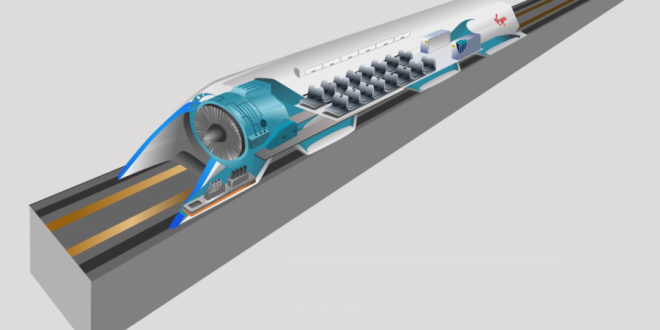As technology develops. new and innovative modes of transport are being proposed. One example is hyperloop. a radical idea that could dramatically cut travel times between cities.
Virgin Hyperloop One is among a number of businesses — others include Hyperloop Transportation Technologies. which was set up in 2013 — developing a hyperloop system. So far. it has received $295 million in funding. Investors include the Virgin Group. GE Ventures and SNCF.
So what exactly is hyperloop? It`s a form of transportation that Virgin Hyperloop One says uses magnetic levitation to float vehicles above a track. Electric propulsion accelerates the vehicle through a low-pressure tube. with the vessel capable of gliding for long distances at `airline speed` thanks to ultra-low aerodynamic drag.
The potential of hyperloop is. according to the company. considerable. It says that the fully autonomous and enclosed system would produce no direct carbon emissions and cut the travel time between Los Angeles and San Francisco to just 43 minutes.
`When we look at the technology we`re developing. when we look at the progress we`ve made. when we look at the fact that we`ve built a proof of concept already — I think we`re going to change people`s lives.` Rob Lloyd. Virgin Hyperloop One`s CEO. told CNBC`s `Sustainable Energy.`
`I think we`re going to improve the lives of people around the world.` Lloyd said. `It`s not just going to be for people that have a lot of wealth or in wealthy areas. we`re going to dramatically change how people live. We`re going to increase opportunities for jobs. we`re going to change relationships. we`re going to change their expectations of how commerce is conducted.` While the company`s ambitions are grand and far-reaching. its origins are humble. having started out in a Los Angeles garage in November 2014. `The goal was to create the fifth mode of transport.` Josh Giegel. CTO of Virgin Hyperloop One. said.
Progress has been relatively quick since then. In 2017. the company announced that its first generation pod. the Hyperloop One XP-1. had accelerated for 300 meters and glided above the track using magnetic levitation. The pod was able to apply its brakes and came to a gradual stop.
Malcolm McCulloch is associate professor in engineering science at the University of Oxford. Looking at the bigger picture. he outlined what would be important in the mobility sector in the years to come.
`There`s going to be three new technologies that we`re going to need in the near-term. the mid-term and the long-term.` he said. `In the near-term. it`s going to be cheaper and more compact batteries for electric vehicles. In the medium-term. it`s going to be autonomous driving and making sure that works to an acceptable level.`
In the long-term. McCulloch said that the focus would be on looking at alternative fuel sources for long-distance travel. `One of the interesting ones is going to be ammonia. which is basically a better form of carrying hydrogen.`
 Iran Energy News Oil, Gas, Petrochemical and Energy Field Specialized Channel
Iran Energy News Oil, Gas, Petrochemical and Energy Field Specialized Channel




